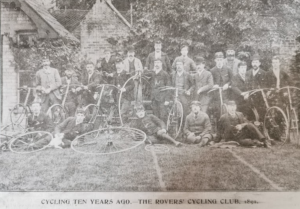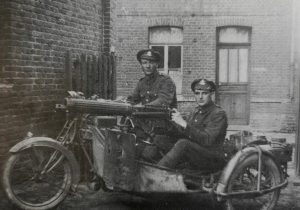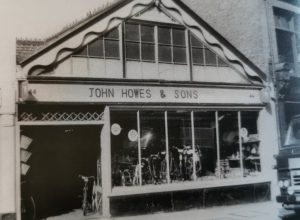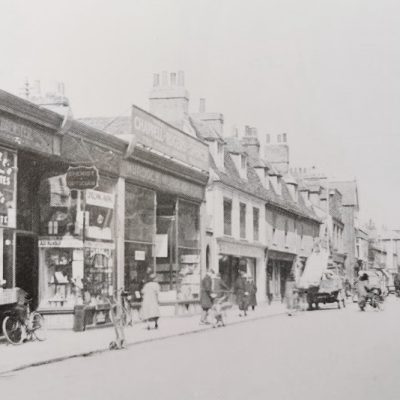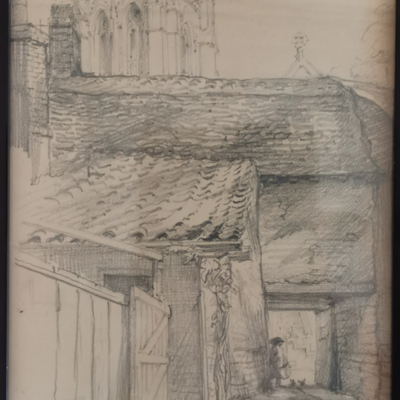Search by topic
- archaeology
- Building of Local Interest
- charity
- church
- crime
- dressmaker
- fire
- Great Eastern Railway
- Listed building
- Mapping Relief
- medieval
- oral history
- poverty
- Public House
- Rattee & Kett
- Religious House
- Roman
- scholar
- school
- Then and Now
- tudor
- women
- work
- world war one
- world war two
Search by text
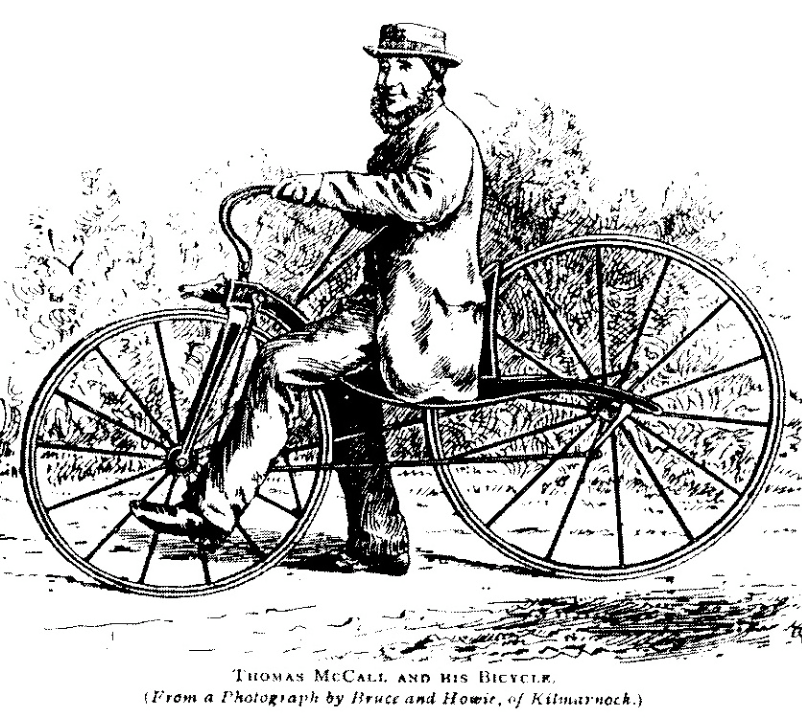 Velocipede circa 1869 (Wikipedia)
Velocipede circa 1869 (Wikipedia)42, 44, 46 (13)Regent Street
History of 42 Regent Street
1840
CWN 26.11.1981 suggests that John Howes moved from Norfolk to Cambridge in 1840 and set up business here as a coach builder and wheelwright, becoming Downing College’s first business tenant and in due course the first cycle trading company in the country.
1851
David Warley, 27, upholsterer, b Norfolk
Mary Ann, 24, b Hunts
1858 4.9.1858 – Cambridge Chronicle reported that Horace Martin, a young draper’s assistant, hired a velocipede from John Howes for an hour. Horace Martin was brought up on remand charged with stealing a velocipede, the property of Mr Howes of Regent Street. The prisoner applied for an adjournment of the case in the absence of a witness he expected from London and his counsel Mr Naylor. The same was agreed to but it was arranged that the evidence of a witness in attendance from Bury St Edmunds, should be take. Robert Burroughes, landlord of The Fox, Eastgate Street,, Bury St Edmund’s was then sworn. he said that on Tuesday night about five or six weeks ago, the prisoner arrived at his house with a velocipede and remained there until the next Friday. Defendant then paid his bill and asked what the railway fare was to Lowestoft, witness told him, and he said he had not money enough and finally borrowed 5s of witness, saying he would be back in the few days and would leave the velocipede as security. On receipt of the 5s the prisoner went away and the witness had never seen him since till now. A woman, a Cambridge carrier, applied for the velocipede about a week ago but as she had not got the 5s witness refused to let her have it………. The carrier was a Mrs Smith who had been instructed to collect the bike. Mr Howes used the Police Gazette to publicize the crime.
This bike was probably a Macmillan or Dalzell type invented in 1839.
1861
According to John Howes, talking in 1981 (see above): We are told that in 1868, John went to the Paris Exposition, saw there two wheeled things with a saddle and pedals, came home and built one, and so the bone shaker as it was called, was introduced to this part of the world. By this time, John Howes, son of the founder, would have been firmly established in the business. The next step was the appearance of the Ordinary Bicycle of Penny Farthing as it became known. By 1873 it was decided a show case was needed to display the products and so a shop with a large window was built in front of the workshop.
1869
M E Keynes in A House By The River p152 writes that in 1869 he [J Howes] had produced his first ‘bone-shaker’ bicycle with its steel tyres and wooden wheels, having memorized one he saw in 1867 at the Paris Exhibition. Her father, Professor George Darwin was a keen cyclist and had a great respect for John Howes.
George Darwin joined in 1898 the recently formed Cambridge Cyclist’s Protection Committe. The leader of this new club was John H Barker and meetings were held in his offices at 26 Park Parade.
J Howes would give new bicycle owners a 24 page Training Manual on how to derive the maximum benefit from the machine.
1871
1873 A new shop with large window over the yard was built in front of the original workshop and smithy. The manufacture of “Granta” bicycles took place in a workshop above the original lower workshop.
1874
John Howes, carriage builder
1881
John Howes, 52, bicycle agent and machinist, b Norfolk
1891
Howes
1897
Howes took out a 30 year lease in 1897 on the piece of land next door and built a self contained shop, no.42. The two shops were run together until the lease expired in 1927, and because of the recession, was not renewed.
1901 (13)
Charles J Howes, 42, cycle manufacturer, b Cambridge
Mary E, 41, b Cambridge
Ethel M, 17, b Cambridge
Charles C, 15, b Cambridge
Winifred J, 13, b Cambridge
Sidney R, 10, b Cambridge
Eric K, 6, b Cambridge
In 1891 the Howes family were living at 72 Mill Road
1911 (46)
Charles John Howes, 52, cycle engineer, b Cambridge
Mary Elizabeth, 51, b Cambridge
Ethel May, 26, b Cambridge
Charles Clarence, 25, cycle engineer, b Cambridge
Eric Neville, 16, b Cambridge
Kathleen Mary, 9, b Cambridge
1913
(42) John Howes and Sons, cycle manufacturers
(46) Charles J Howes
WWI: Clarence Howes joined the Machine Gun Corps, Motorised Division, serving in India from 1916.
1927
Sanders the seedsmen took over the lease of No.42.
4/11/1930: In a quiet street in Cambridge, a very charming old lady celebrates her 100th birthday. She is Mrs Howes, widow of the late John Howes head of the bicycle firm in Regent Street. She comes of a long- lived family. She was born in Coronation Street. Her father, John Galley, a reader at the Pitt Press, lived to the age of 86 and her mother to 80. She has still living four sons and three daughters, 23 grandchildren and 10 great-grandchildren. Her memory is still good and she has vivid memories of her girlhood. She was present at the dinner on Parker’s Piece to celebrate Queen Victoria’s coronation, when her father was one of the carvers. (Cambridge Press)
1932
After 1932 the Howes business was headed up by Charles Clarence Howes, great grandson of the founder and friend of John Henry Victor Charles.
1939
Charles Clarence Howes is living at 114 Tenison Road
1940-42
J A Charles recalls in ‘One Man’s Cambridge’ that he used to work for Clarence Howes at No. 44 on Saturday morning mending puncture for which he was paid 2s 6d for the morning.
In 2024 JM sent this note:
When I joined Jesus College Chapel Choir in 1957, one of the other probationers was Michael Howes whose dad – presumably John Howes – ran the old bike shop about which you have so much history already. His elder brother was also a chorister.
1964
(42) J Sanders, seed merchants
[James Sanders had acquired the nursery originally owned by Jabez Chater in West Road, called the Gonville Nursery]
(42) City of Cambridge Liberal Association
(44) John Howes, cycle dealers
(46) Kwick Cleaners
Contribute
Do you have any information about the people or places in this article? If so, then please let us know using the Contact page or by emailing capturingcambridge@
License
This work is licensed under CC BY-NC-SA 4.0





